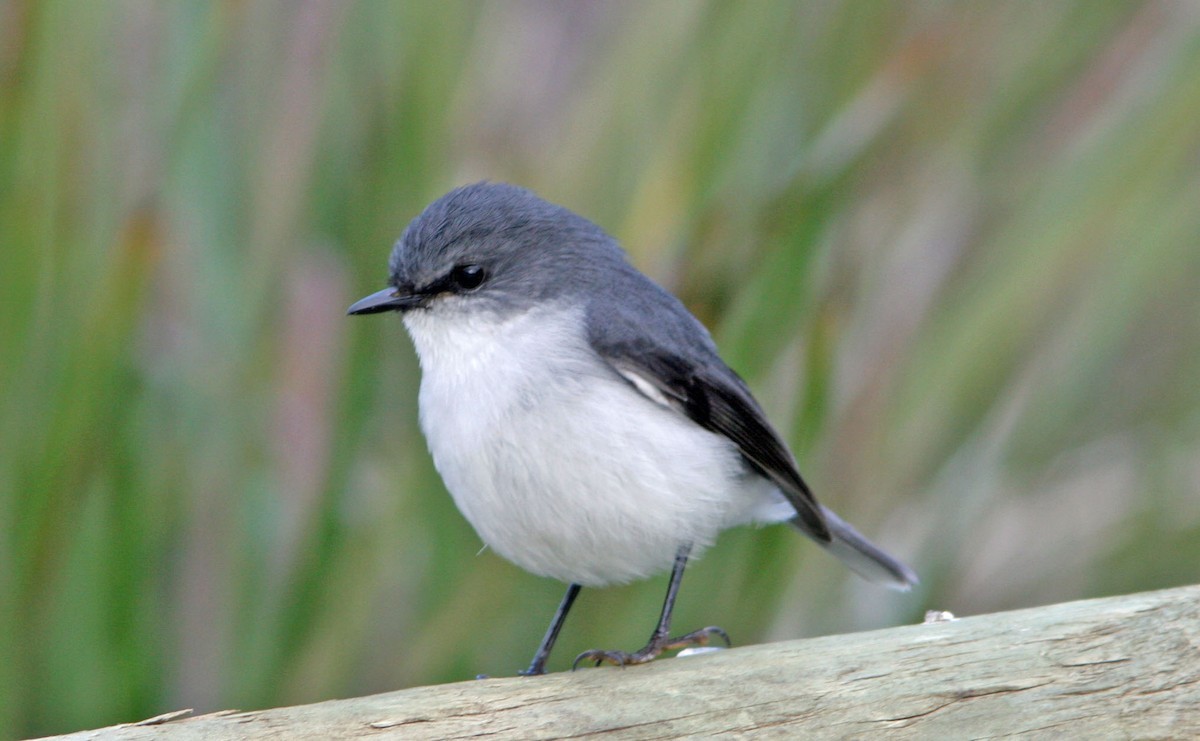White-breasted Robin
A species of Yellow Robins and Allies Scientific name : Quoyornis georgianus Genus : Yellow Robins and Allies
White-breasted Robin, A species of Yellow Robins and Allies
Botanical name: Quoyornis georgianus
Genus: Yellow Robins and Allies
Content
Description General Info
 Photo By Don Roberson
Photo By Don Roberson Description
The white-breasted robin ranges between 14.5 and 17.0 cm (5 ⁄4 and 6 ⁄4 in) long, with a wingspan of 22–25 cm (8 ⁄4–9 ⁄4 in). The male weighs 20.5 g, while the female is lighter at 16.5 g. Males and females are similar in coloration, with blue-grey upperparts, paler eyebrows, and whitish underparts. The grey tail is tipped with white. Bills and feet are black in colour, while eyes are dark brown. Birds from the northern part of its range are smaller and darker grey in colour. Juveniles are brownish. 
Feeding Habits
The white-breasted robin is insectivorous, foraging for its prey mainly on or near the ground, in or beneath undergrowth. 
Habitat
The white-breasted robin is found in Western Australia south from Geraldton to the southwest corner of the continent. Within this area, it is mainly restricted to two areas of different habitat. In the main southern part of its range, it is found in an area bounded by Jarrahdale and Woorooloo on or east of the Darling Scarp, and south-east to Beaufort Inlet. Here it occurs in tall forest dominated by karri (Eucalyptus diversicolor), where it is found in dense undergrowth of such plant species as karri hazel (Trymalium odoratissimum subsp. trifidum), karri she–oak (Allocasuarina decussata), and nedik (Bossiaea aquifolium), typically along rivers and gullies. It also inhabits dry sclerophyll forest of karri, jarrah (Eucalyptus marginata), and bull banksia (Banksia grandis), where it lives in the 2-3 m high understory. The northern population is found along a narrow band from Geraldton south to Yanchep National Park, where it lives in coastal thickets—often covered in dodder—of Acacia rostellifera, Acacia cyclops, Melaleuca cardiophylla growing over sand dunes on limestone soils. It is sedentary, with pairs or small groups maintaining territories in its range. Young male birds remain around their parents' territories as helper birds for around a year, while females disperse. 
General Info
Behavior
The white-breasted robin is a cooperative breeder; breeding pairs are often assisted by one or more helper birds that help to raise young. Helper birds are mostly male; female birds are more likely to leave the territory in the first year of their life, while males are more likely to remain. 
Distribution Area
The white-breasted robin is found in Western Australia south from Geraldton to the southwest corner of the continent. Within this area, it is mainly restricted to two areas of different habitat. In the main southern part of its range, it is found in an area bounded by Jarrahdale and Woorooloo on or east of the Darling Scarp, and south-east to Beaufort Inlet. Here it occurs in tall forest dominated by karri (Eucalyptus diversicolor), where it is found in dense undergrowth of such plant species as karri hazel (Trymalium odoratissimum subsp. trifidum), karri she–oak (Allocasuarina decussata), and nedik (Bossiaea aquifolium), typically along rivers and gullies. It also inhabits dry sclerophyll forest of karri, jarrah (Eucalyptus marginata), and bull banksia (Banksia grandis), where it lives in the 2-3 m high understory. The northern population is found along a narrow band from Geraldton south to Yanchep National Park, where it lives in coastal thickets—often covered in dodder—of Acacia rostellifera, Acacia cyclops, Melaleuca cardiophylla growing over sand dunes on limestone soils. It is sedentary, with pairs or small groups maintaining territories in its range. Young male birds remain around their parents' territories as helper birds for around a year, while females disperse. 

 Photo By Don Roberson
Photo By Don Roberson Scientific Classification
Phylum
Chordates Class
Birds Order
Perching birds Family
Australasian robins Genus
Yellow Robins and Allies Species
White-breasted Robin